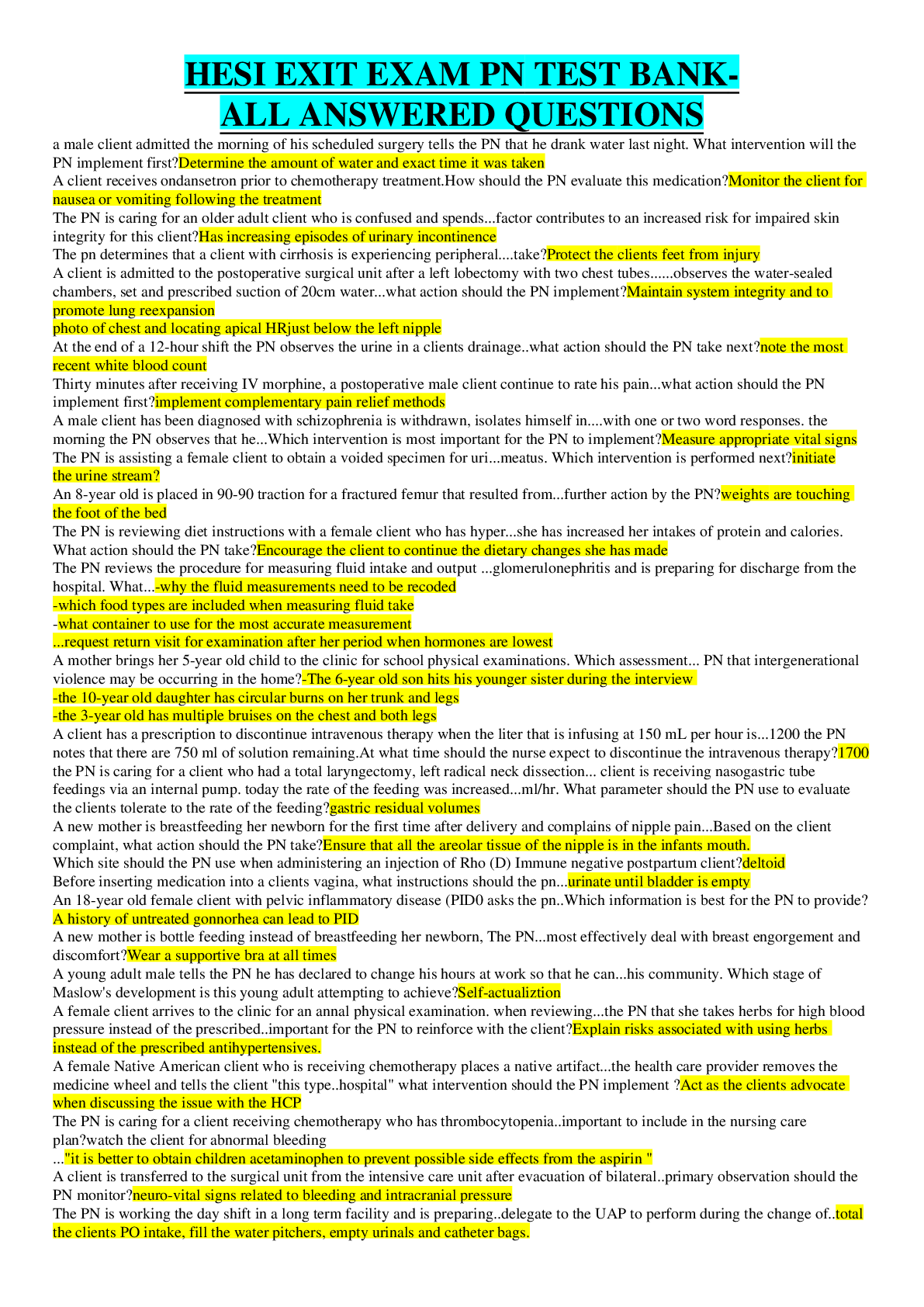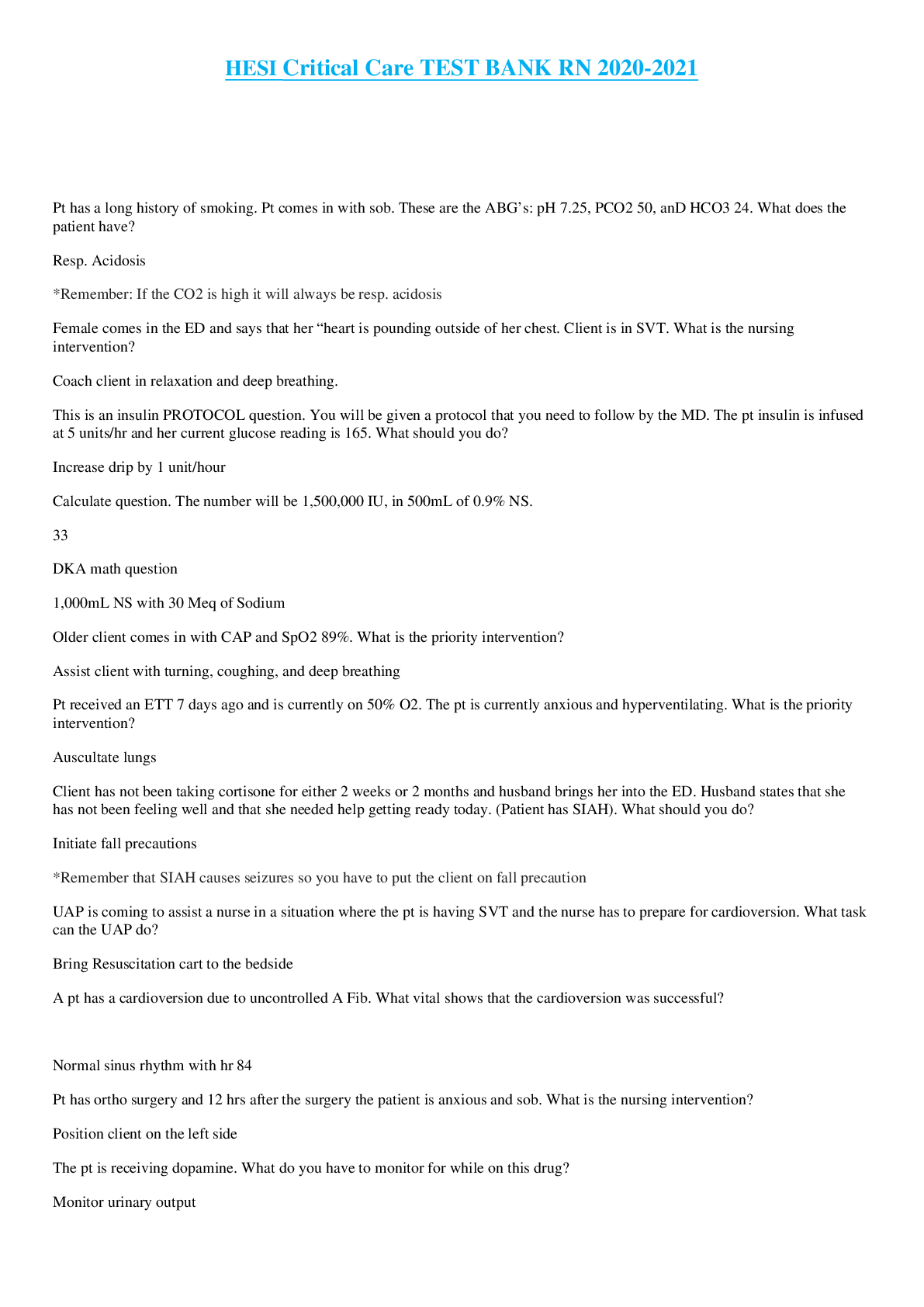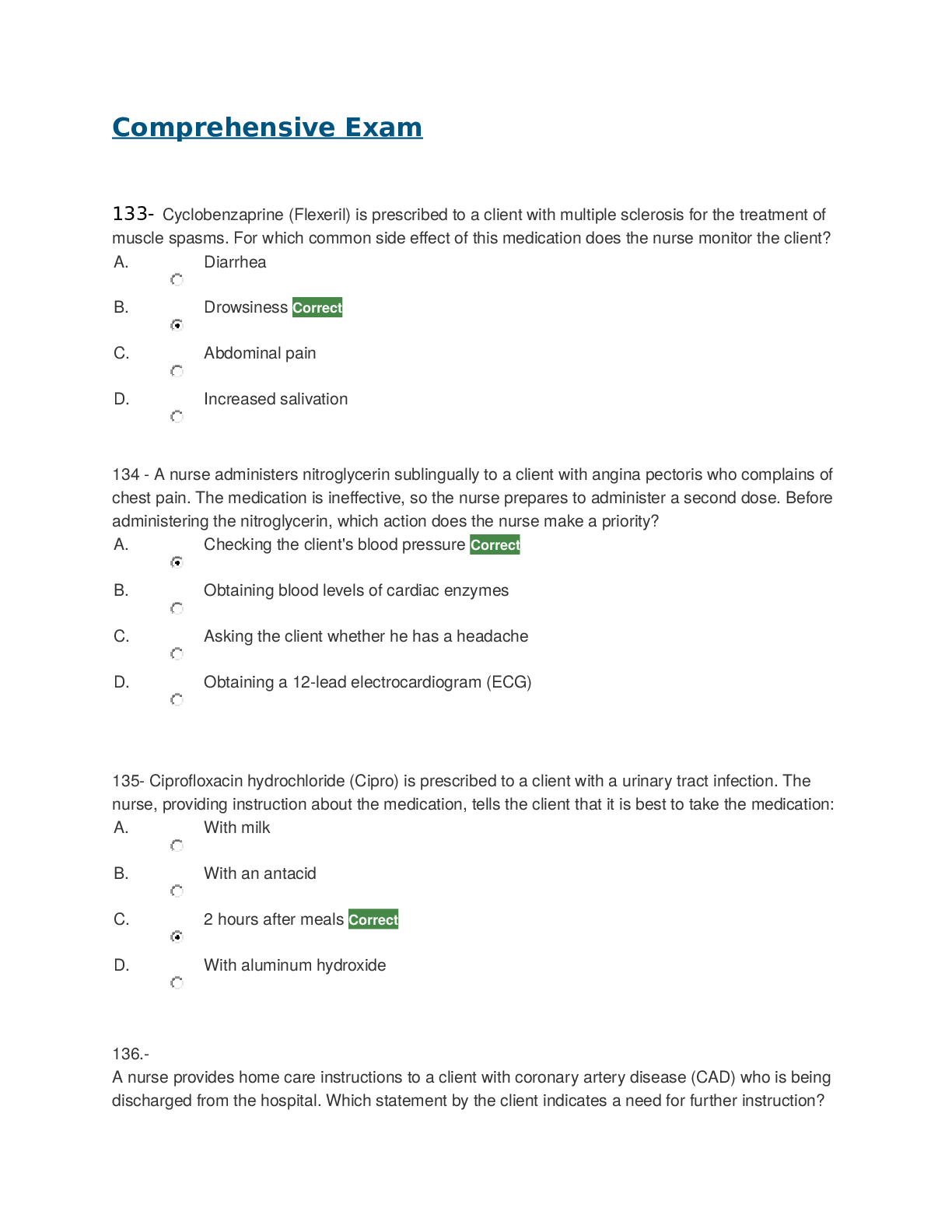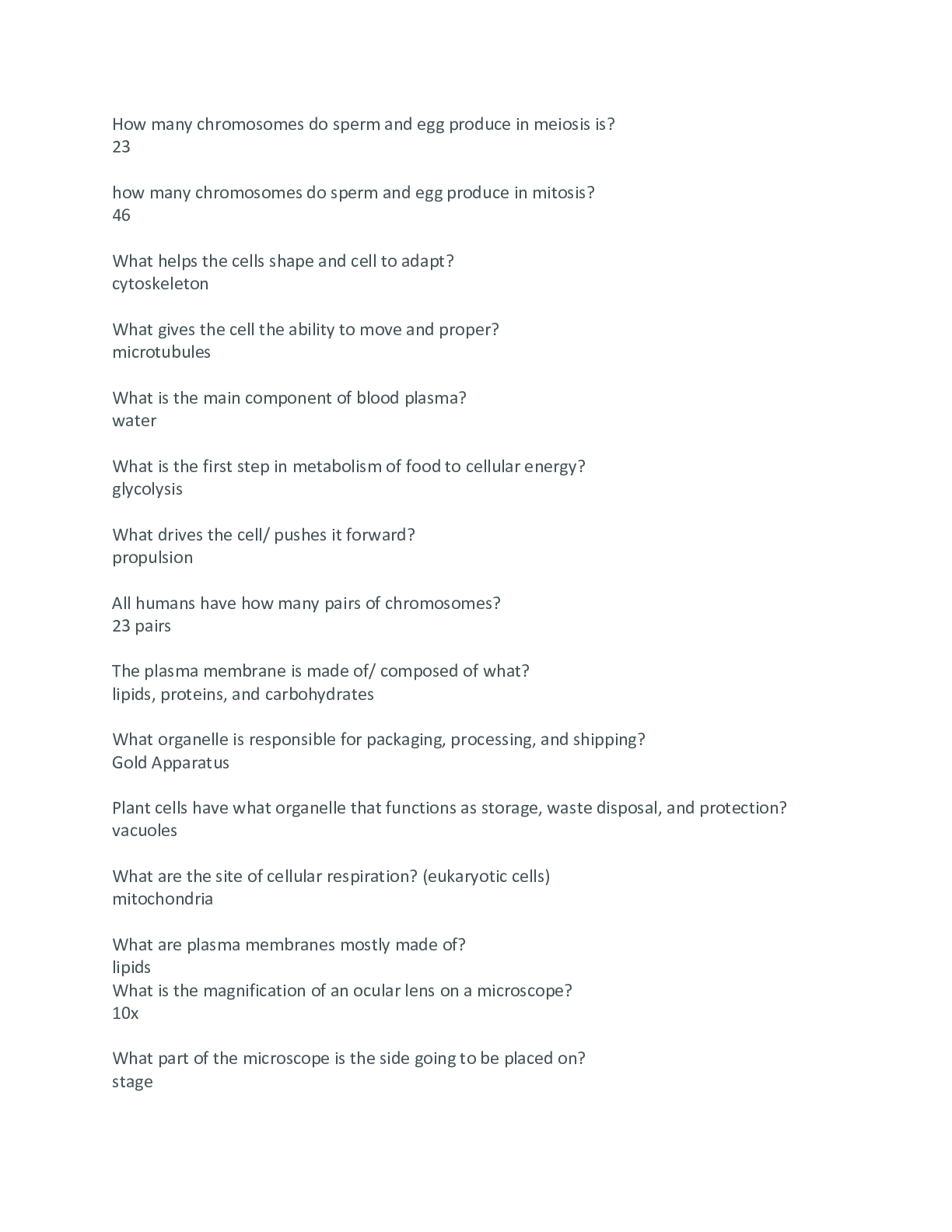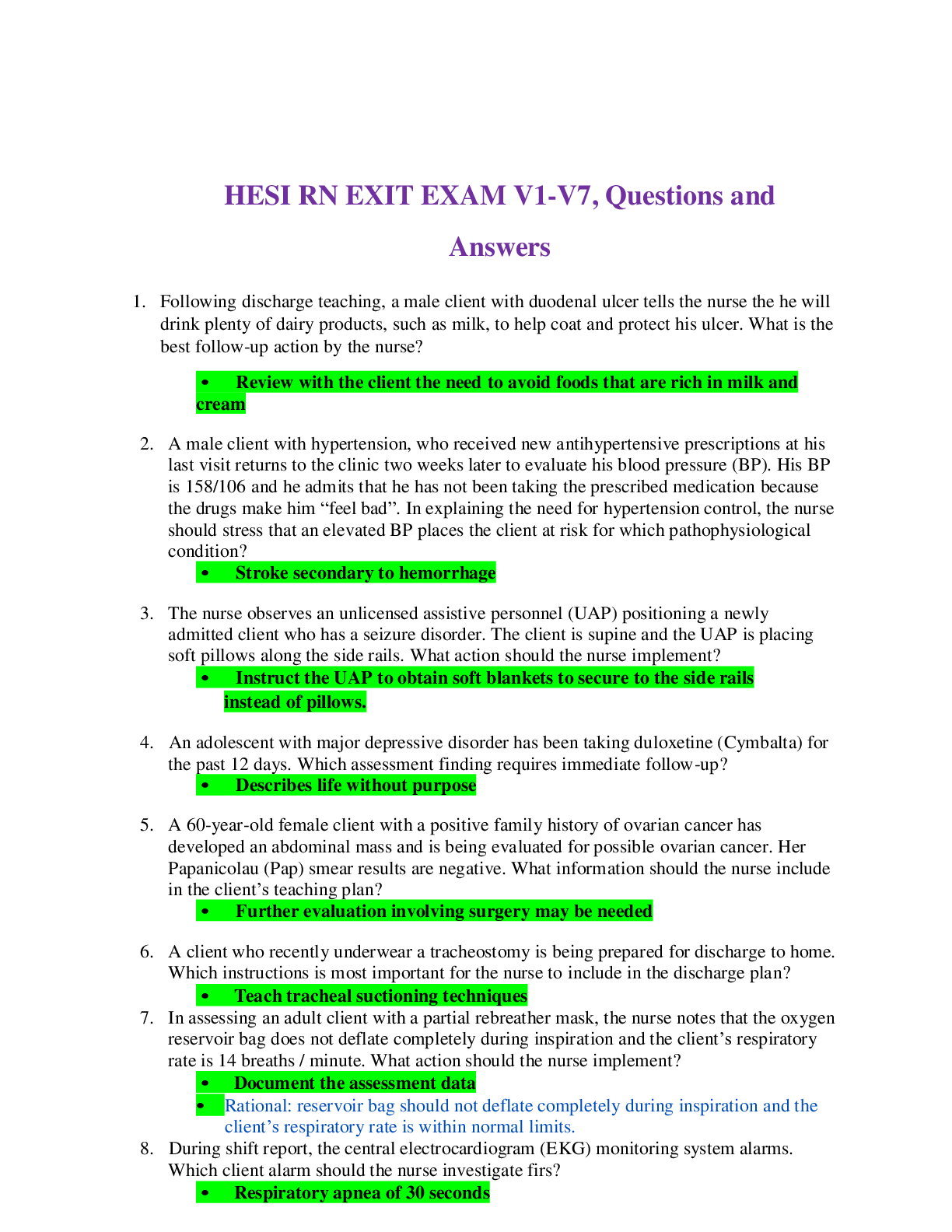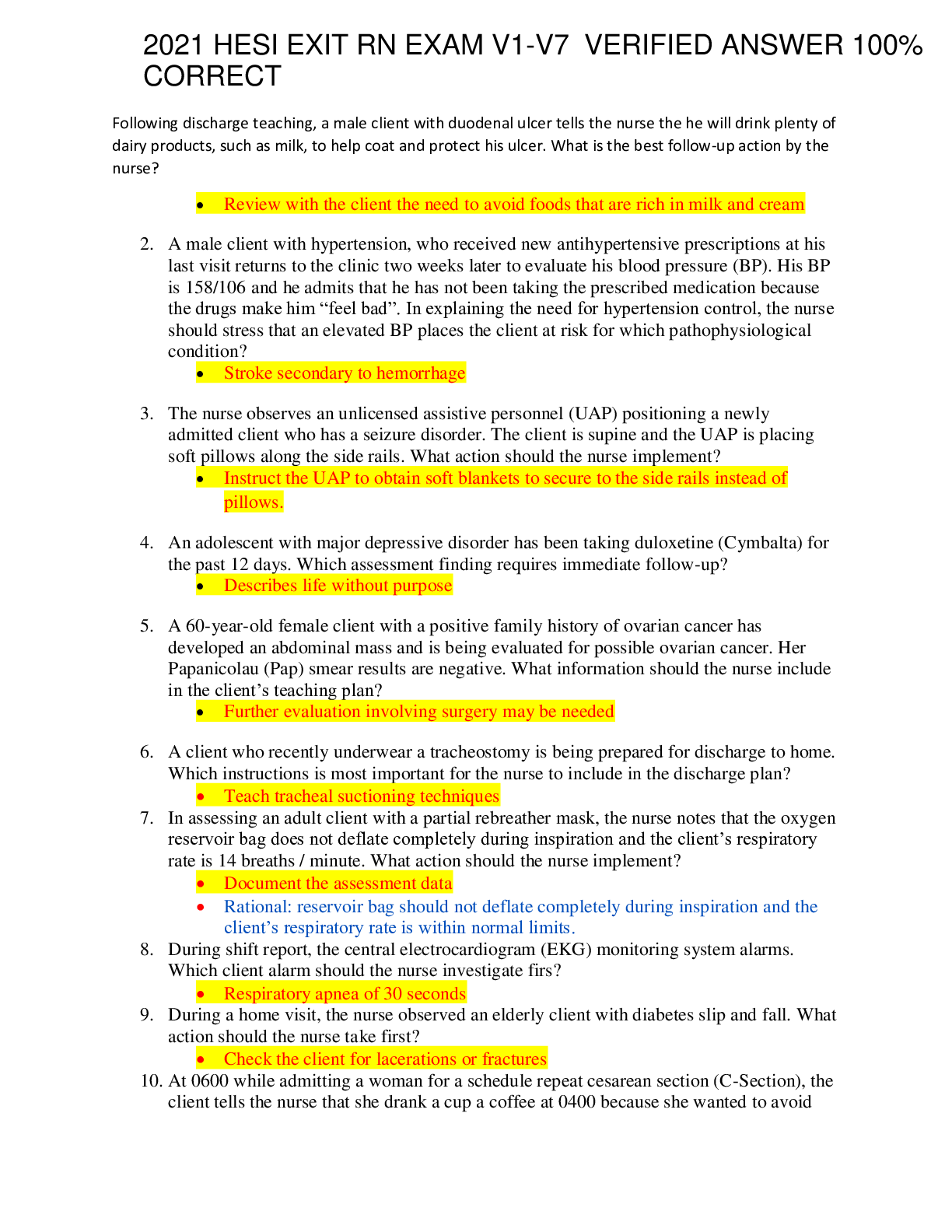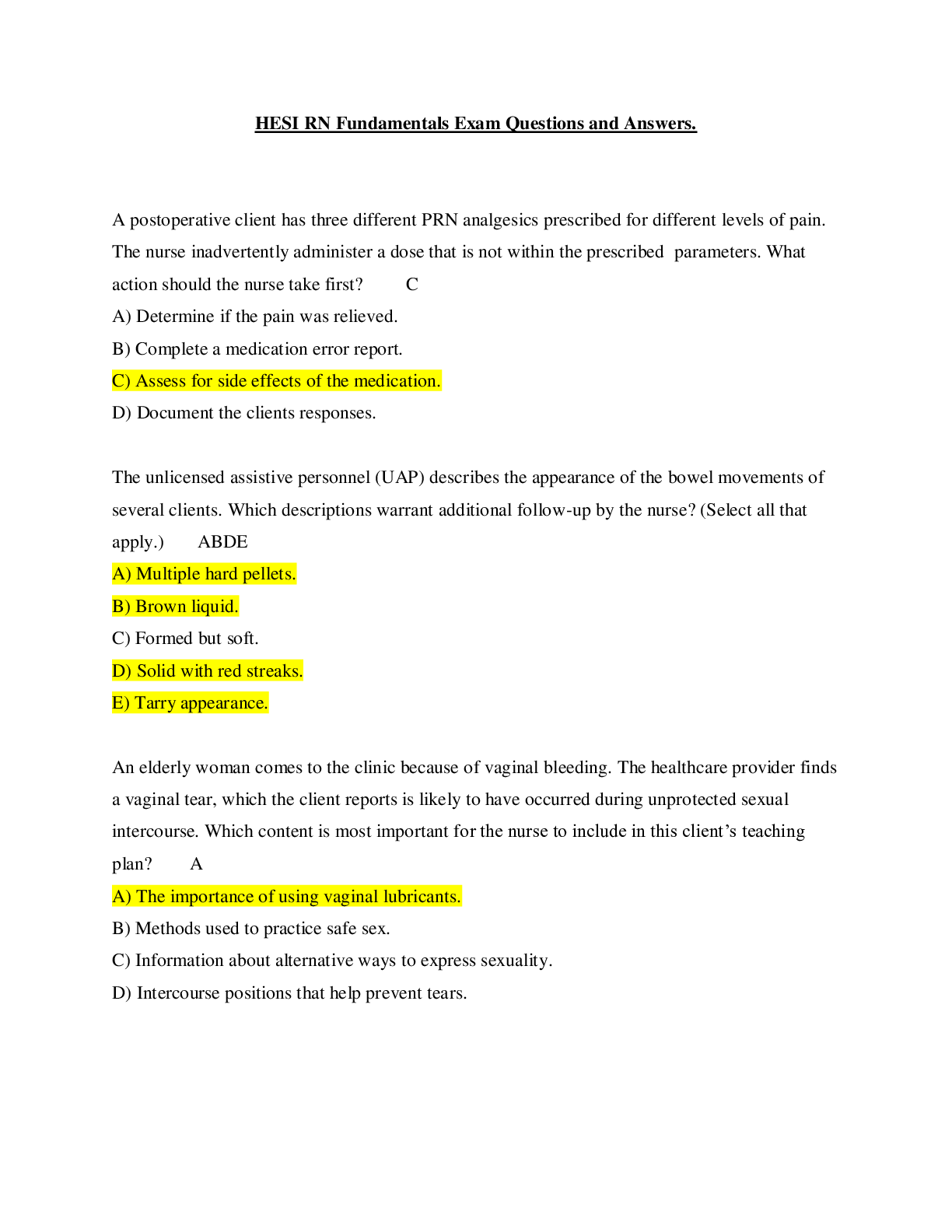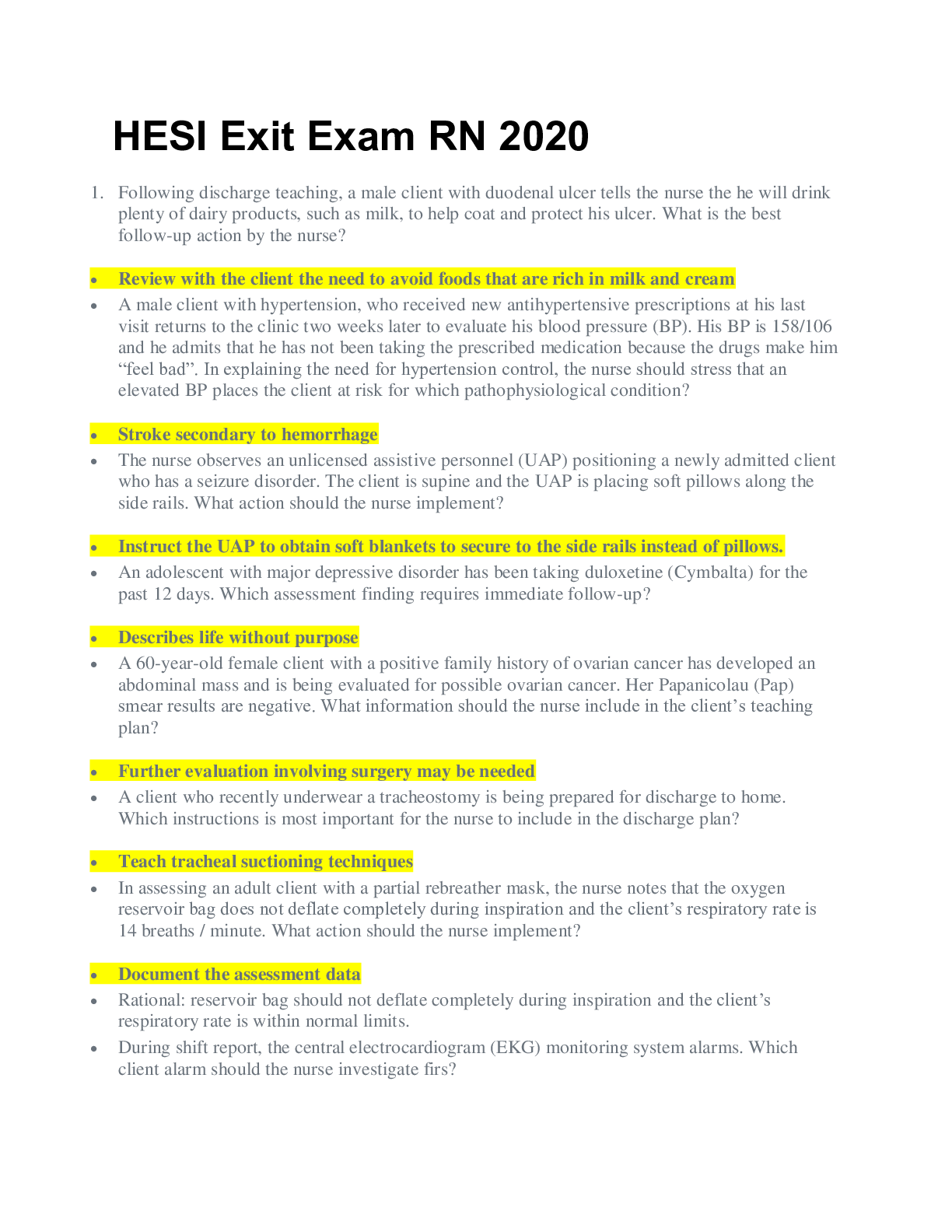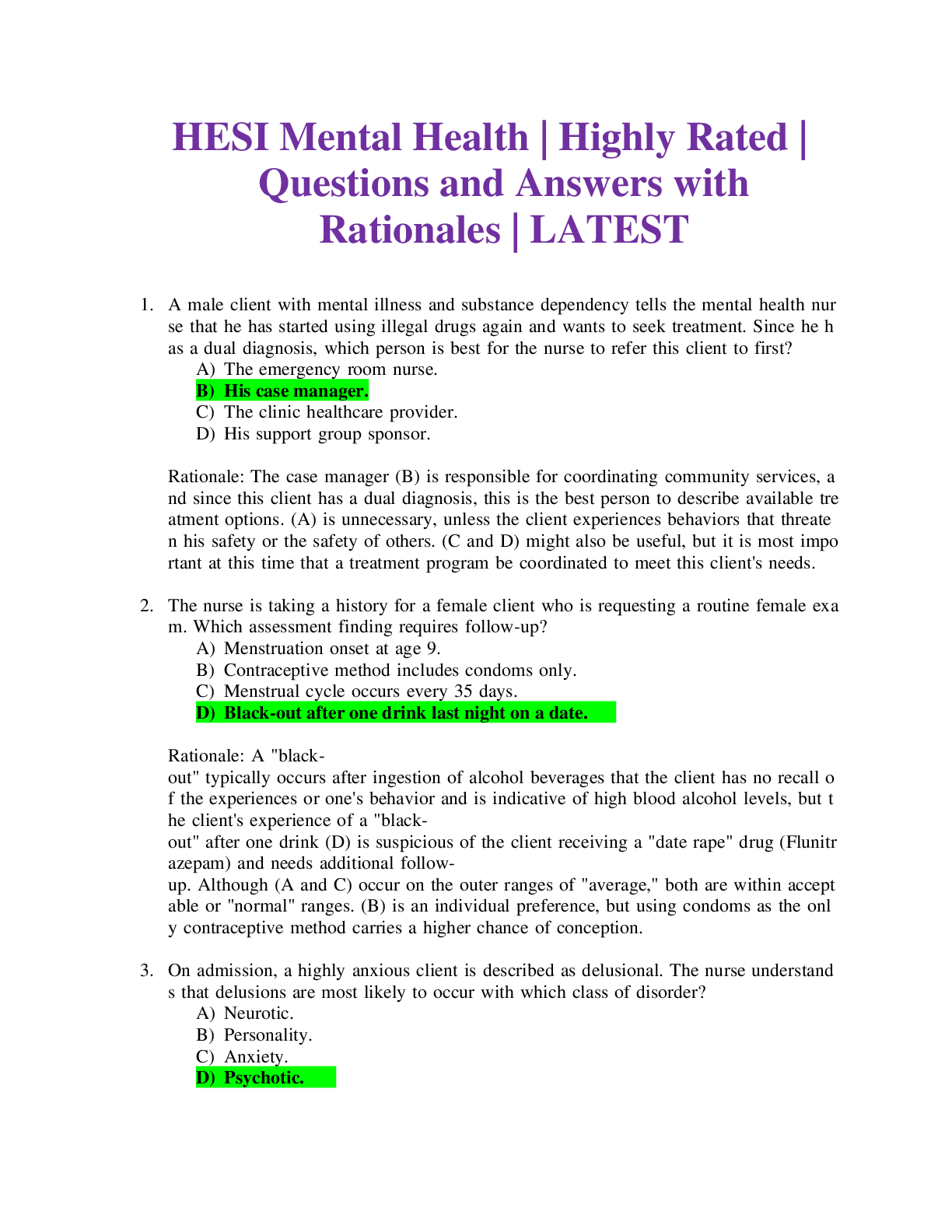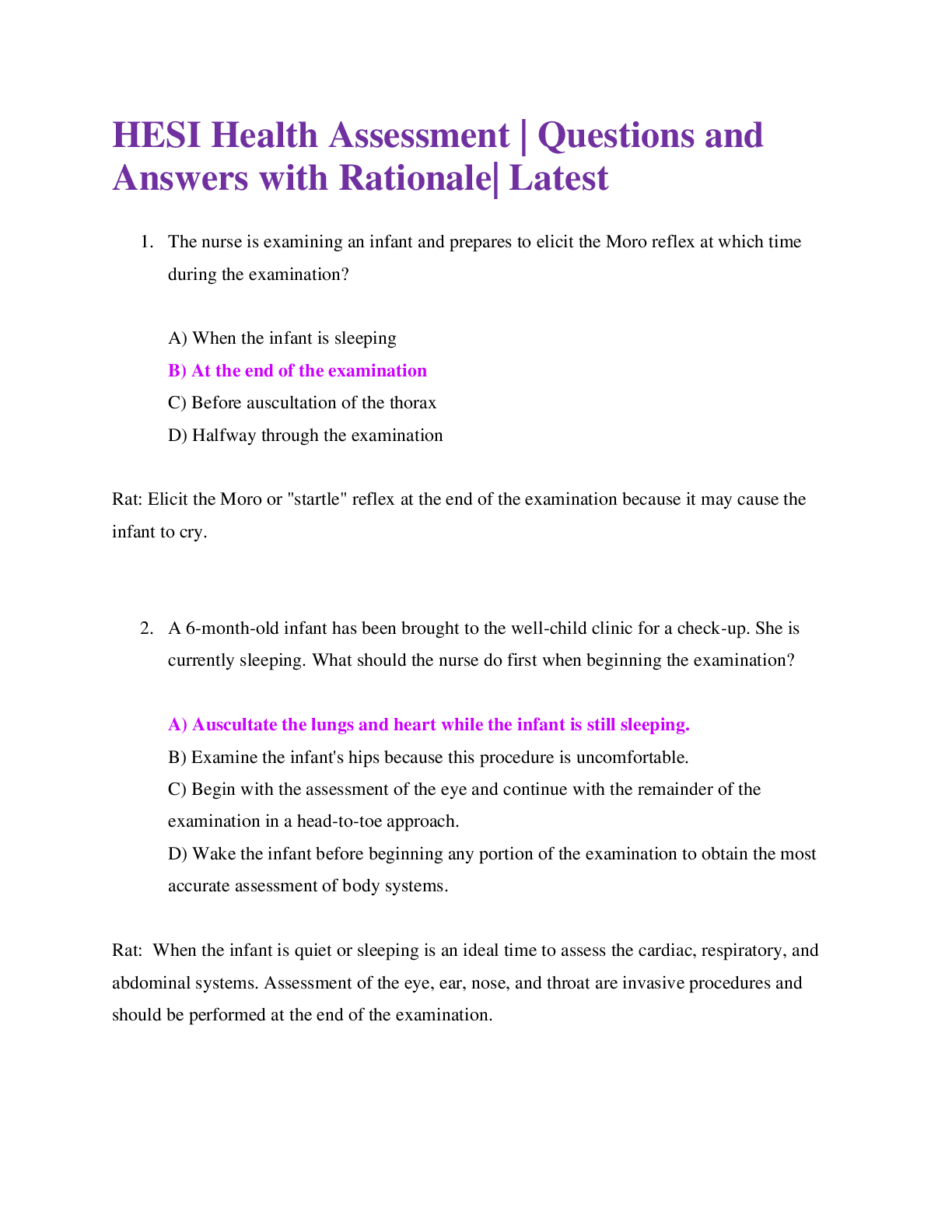Health Care > HESI > Fundamental HESI RN WITH ALL THE ANSWERS HIGHLIGHTED 2021 (All)
Fundamental HESI RN WITH ALL THE ANSWERS HIGHLIGHTED 2021
Document Content and Description Below
Which assessment data would provide the most accurate determination of proper placement of a nasogastric tube? A) Aspirating gastric contents to assure a pH value of 4 or less. B) Hearing air pass in ... the stomach after injecting air into the tubing. C) Examining a chest x-ray obtained after the tubing was inserted. D) Checking the remaining length of tubing to ensure that the correct length was inserted. C) Examining a chest x-ray obtained after the tubing was inserted Both (A and B) are methods used to determine proper placement of the NG tubing. However, the best indicator that the tubing is properly placed is (C). (D) is not an indicator of proper placement When assisting an 82-year-old client to ambulate, it is important for the nurse to realize that the center of gravity for an elderly person is the A) Arms. B) Upper torso. C) Head. D) Feet B) Upper torso The center of gravity for adults is the hips. However, as the person grows older, a stooped posture is common because of the changes from osteoporosis and normal bone degeneration, and the knees, hips, and elbows flex. This stooped posture results in the upper torso (B) becoming the center of gravity for older persons. Although (A) is a part, or an extension of the upper torso, this is not the best and most complete answer. Which action is most important for the nurse to implement when donning sterile gloves? A) Maintain thumb at a ninety degree angle. B) Hold hands with fingers down while gloving. C) Keep gloved hands above the elbows. D) Put the glove on the dominant hand first. C) Keep gloved hands above the elbows Gloved hands held below waist level are considered unsterile (C). (A and B) are not essential to maintaining asepsis. While it may be helpful to put the glove on the dominant hand first, it is not necessary to ensure asepsis (D). An adult male client with a history of hypertension tells the nurse that he is tired of taking antihypertensive medications and is going to try spiritual meditation instead. What should be the nurse's first response? A) It is important that you continue your medication while learning to meditate. B) Spiritual meditation requires a time commitment of 15 to 20 minutes daily. C) Obtain your healthcare provider's permission before starting meditation. D) Complementary therapy and western medicine can be effective for you. A) It is important that you continue your medication while learning to meditate The prolonged practice of meditation may lead to a reduced need for antihypertensive medications. However, the medications must be continued (A) while the physiologic response to meditation is monitored. (B) is not as important as continuing the medication. The healthcare provider should be informed, but permission is not required to meditate (C). Although it is true that this complimentary therapy might be effective (D), it is essential that the client continue with antihypertensive medications until the effect of meditation can be measured The nurse plans to obtain health assessment information from a primary source. Which option is a primary source for the completion of the health assessment? A) Client. B) Healthcare provider. C) A family member. D) Previous medical records A) Client A primary source of information for a health assessment is the client (A). (B, C, and D) are considered secondary sources about the client's health history, but other details, such as subjective data, can only be provided directly from the client. The nurse is instructing a client with high cholesterol about diet and life style modification. What comment from the client indicates that the teaching has been effective? A) If I exercise at least two times weekly for one hour, I will lower my cholesterol. B) I need to avoid eating proteins, including red meat. C) I will limit my intake of beef to 4 ounces per week. D) My blood level of low density lipoproteins needs to increase. C) I will limit my intake of beef to 4 ounces per week Limiting saturated fat from animal food sources to no more than 4 ounces per week (C) is an important diet modification for lowering cholesterol. To be effective in reducing cholesterol, the client should exercise 30 minutes per day, or at least 4 to 6 times per week (A). Red meat and all proteins do not need to be eliminated (B) to lower cholesterol, but should be restricted to lean cuts of red meat and smaller portions (2-ounce servings). The low density lipoproteins (D) need to decrease rather than increase Examination of a client complaining of itching on his right arm reveals a rash made up of multiple flat areas of redness ranging from pinpoint to 0.5 cm in diameter. How should the nurse record this finding? A) Multiple vesicular areas surrounded by redness, ranging in size from 1 mm to 0.5 cm. B) Localized red rash comprised of flat areas, pinpoint to 0.5 cm in diameter. C) Several areas of red, papular lesions from pinpoint to 0.5 cm in size. D) Localized petechial areas, ranging in size from pinpoint to 0.5 cm in diameter. B) Localized red rash comprised of flat areas, pinpoint to 0.5 cm in diameter Macules are localized flat skin discolorations less than 1 cm in diameter. However, when recording such a finding the nurse should describe the appearance (B) rather than simply naming the condition. (A) identifies vesicles -- fluid filled blisters -- an incorrect description given the symptoms listed. (C) identifies papules -- solid elevated lesions, again not correctly identifying the symptoms. (D) identifies petechiae -- pinpoint red to purple skin discolorations that do not itch, again an incorrect identification A client who is 5' 5" tall and weighs 200 pounds is scheduled for surgery the next day. What question is most important for the nurse to include during the preoperative assessment? A) What is your daily calorie consumption? B) What vitamin and mineral supplements do you take? C) Do you feel that you are overweight? D) Will a clear liquid diet be okay after surgery? A) What is your daily calorie consumption? Vitamin and mineral supplements (B) may impact medications used during the operative period. (A and C) are appropriate questions for long-term dietary counseling. The nature of the surgery and anesthesia will determine the need for a clear liquid diet (D), rather than the client's preference The nurse is performing nasotracheal suctioning. After suctioning the client's trachea for fifteen seconds, large amounts of thick yellow secretions return. What action should the nurse implement next? A) Encourage the client to cough to help loosen secretions. B) Advise the client to increase the intake of oral fluids. C) Rotate the suction catheter to obtain any remaining secretions. D) Re-oxygenate the client before attempting to suction again. D) Re-oxygenate the client before attempting to suction again Suctioning should not be continued for longer than ten to fifteen seconds, since the client's oxygenation is compromised during this time (D). (A, B, and C) may be performed after the client is re-oxygenated and additional suctioning is performed. A hospitalized male client is receiving nasogastric tube feedings via a small-bore tube and a continuous pump infusion. He reports that he had a bad bout of severe coughing a few minutes ago, but feels fine now. What action is best for the nurse to take? [Show More]
Last updated: 1 year ago
Preview 1 out of 43 pages
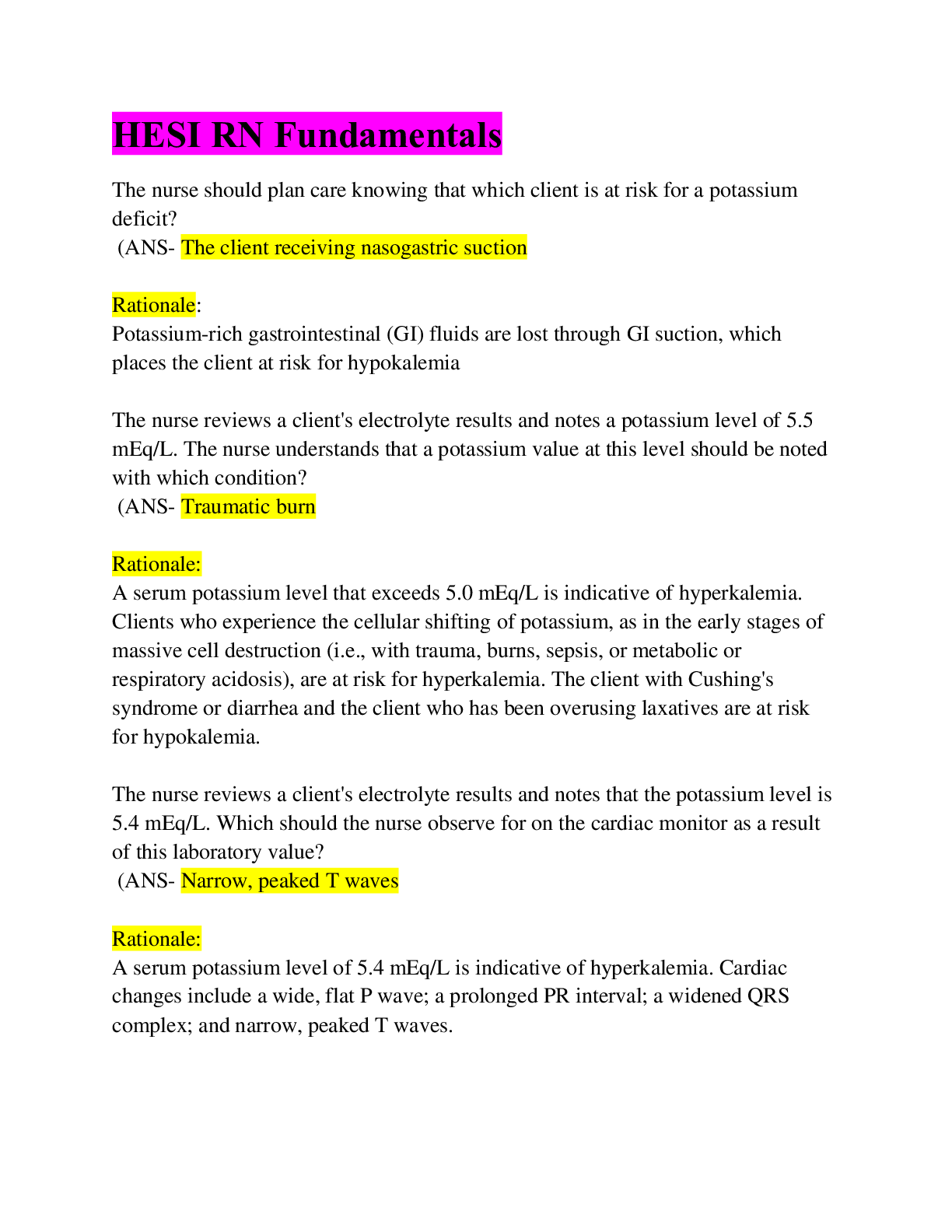
Reviews( 0 )
Document information
Connected school, study & course
About the document
Uploaded On
Oct 08, 2021
Number of pages
43
Written in
Additional information
This document has been written for:
Uploaded
Oct 08, 2021
Downloads
0
Views
41

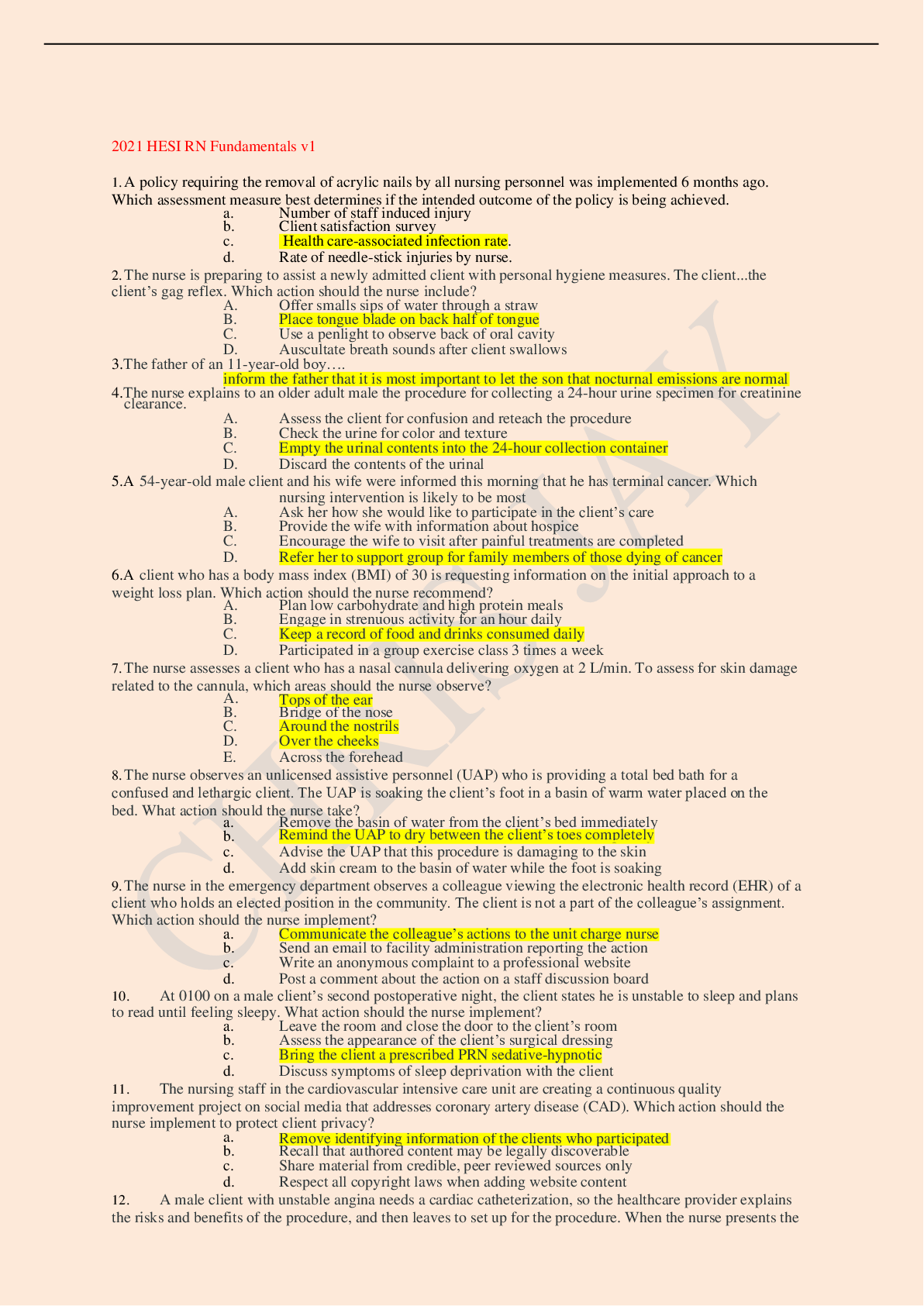

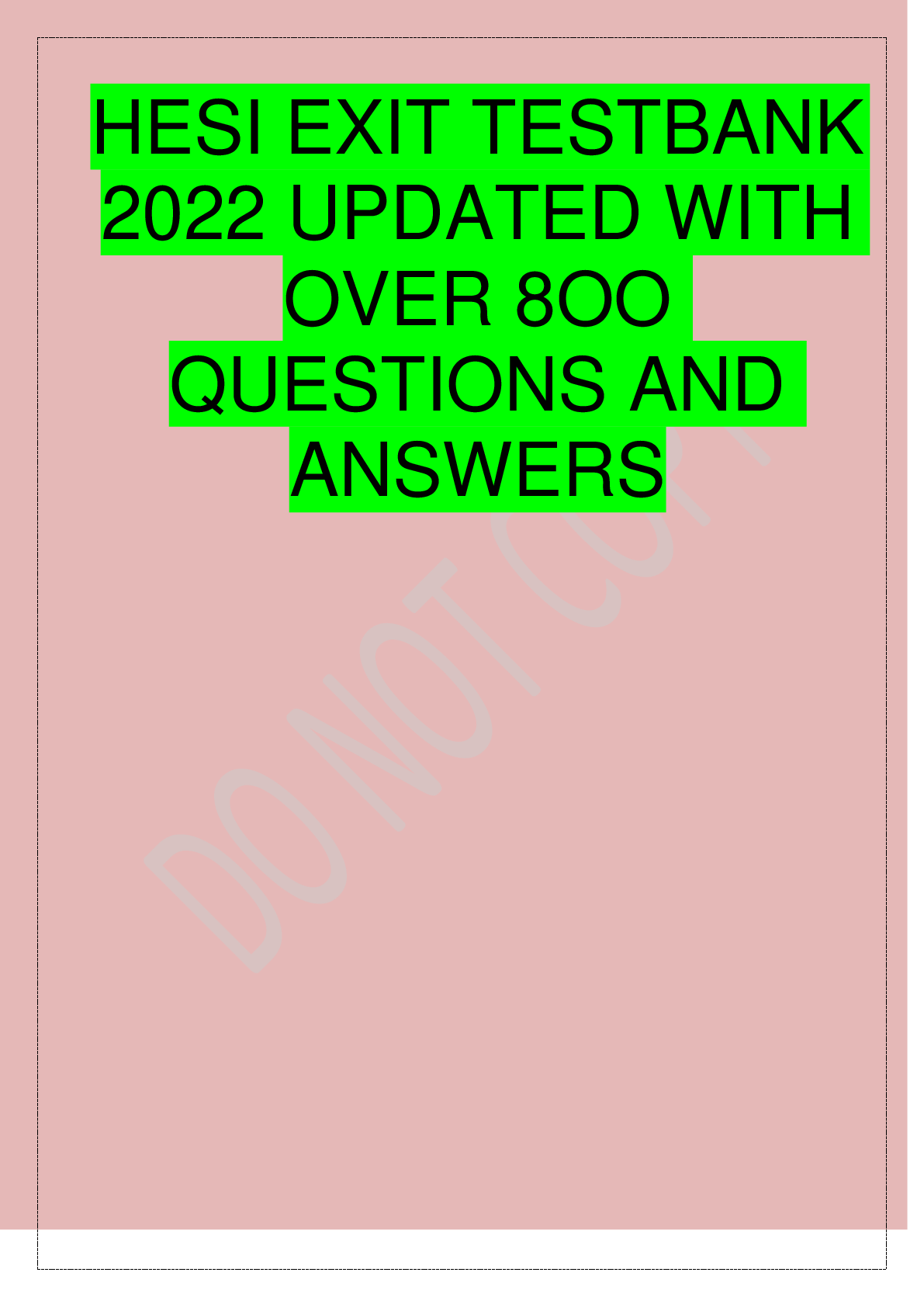
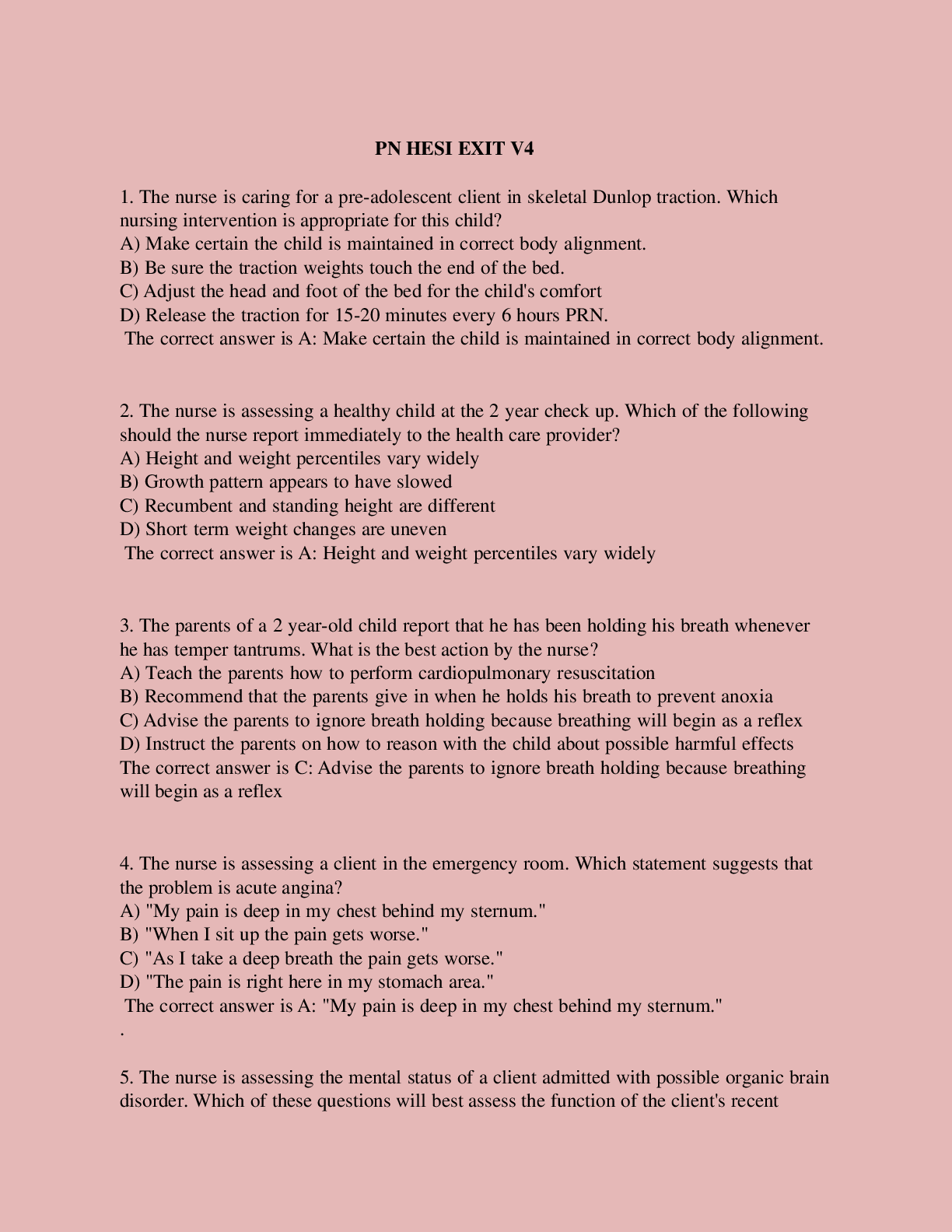

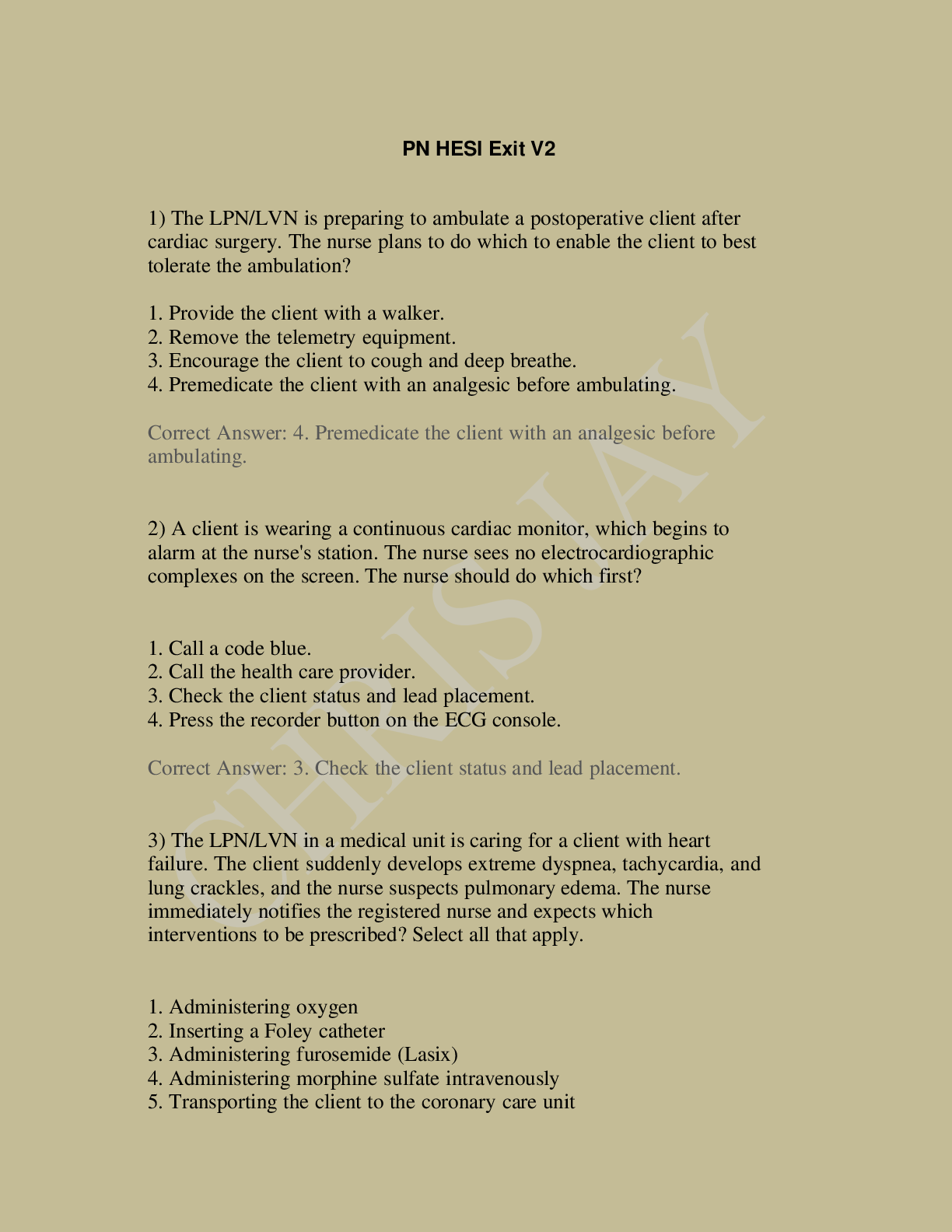

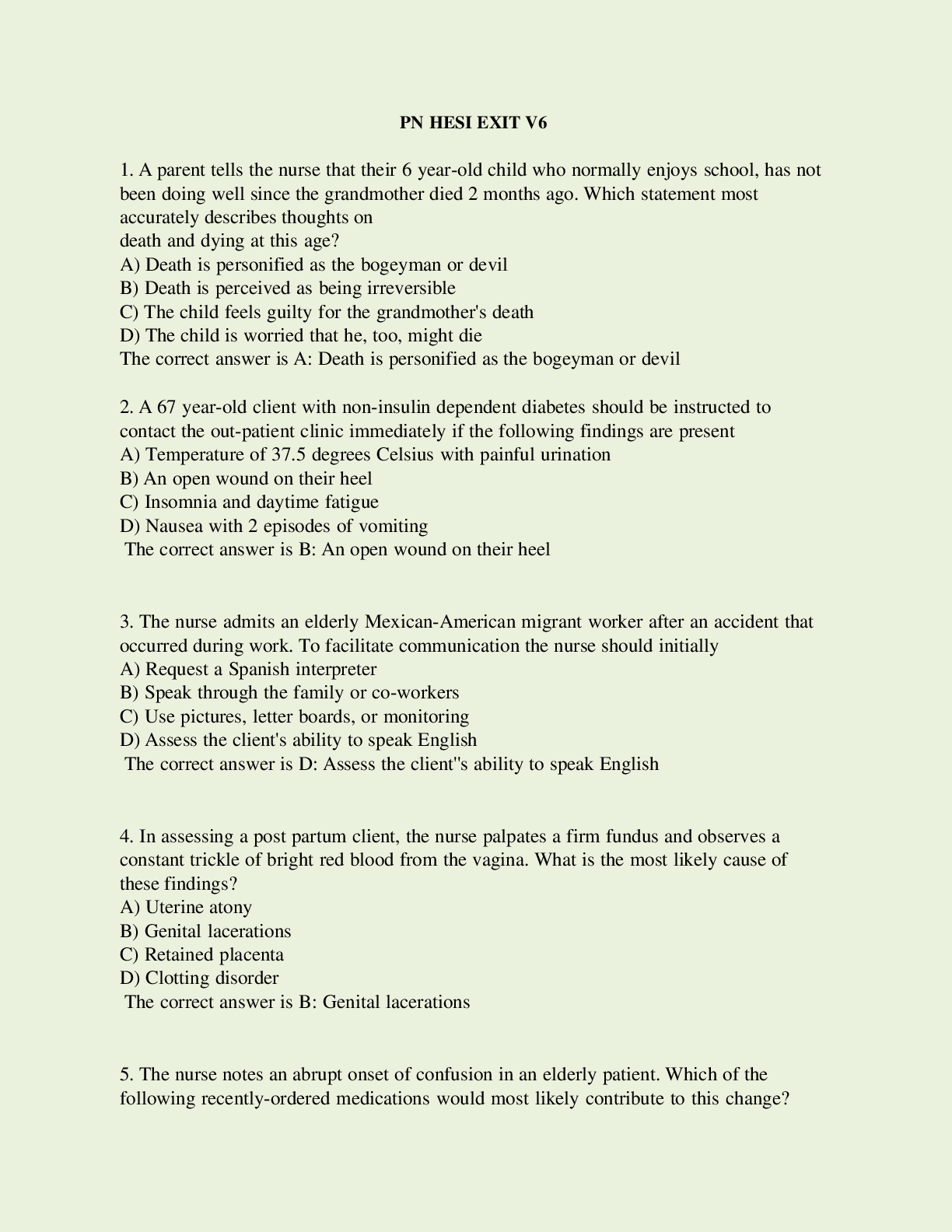



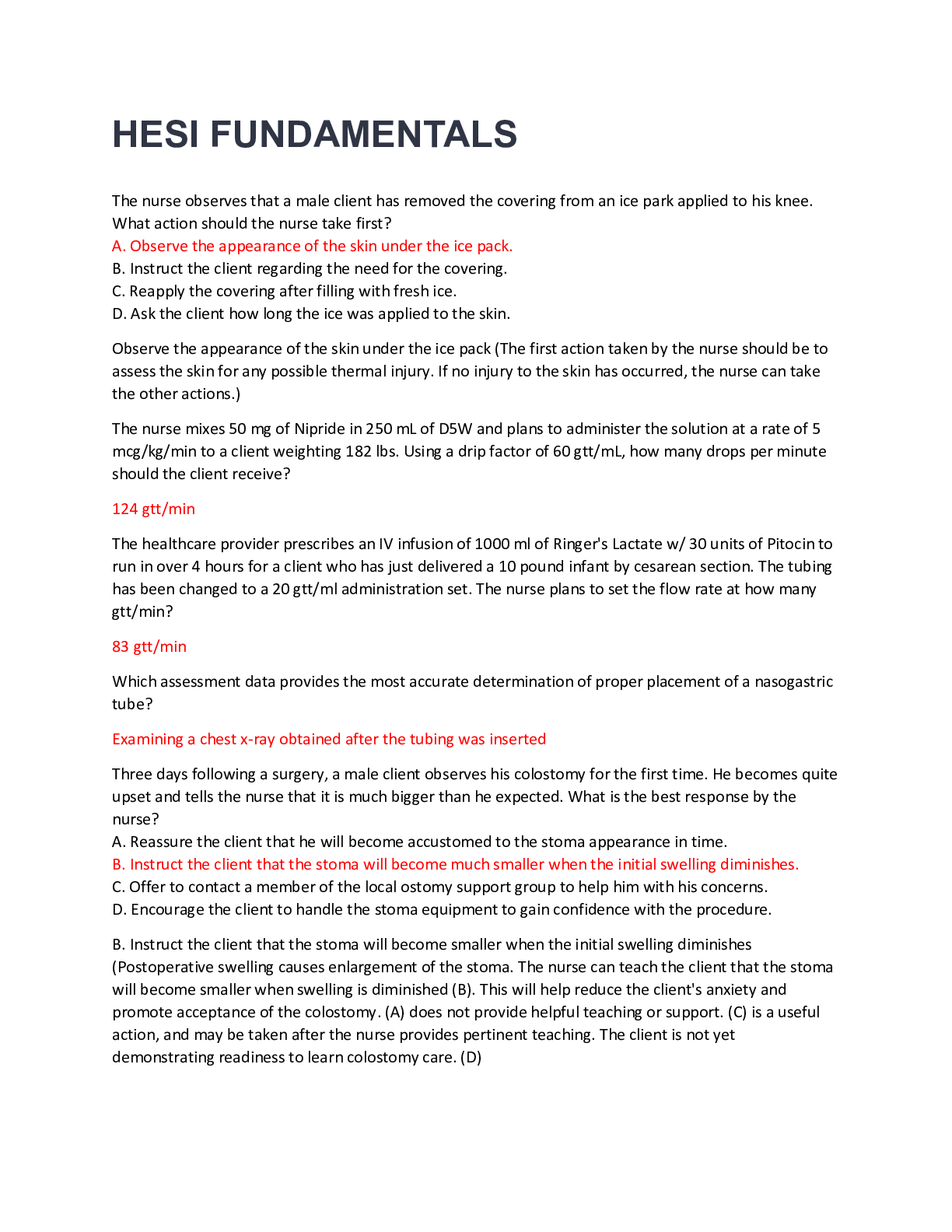
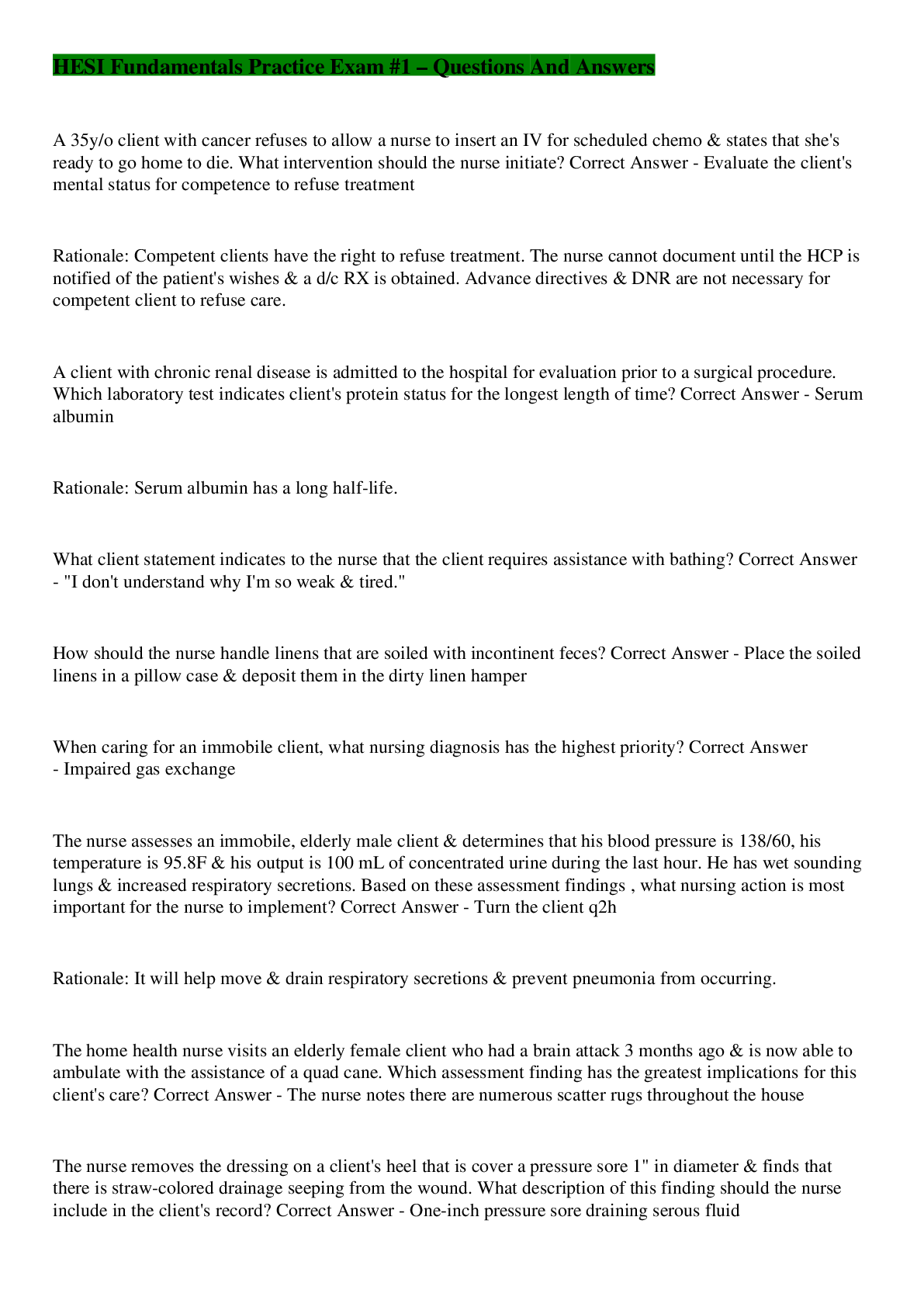
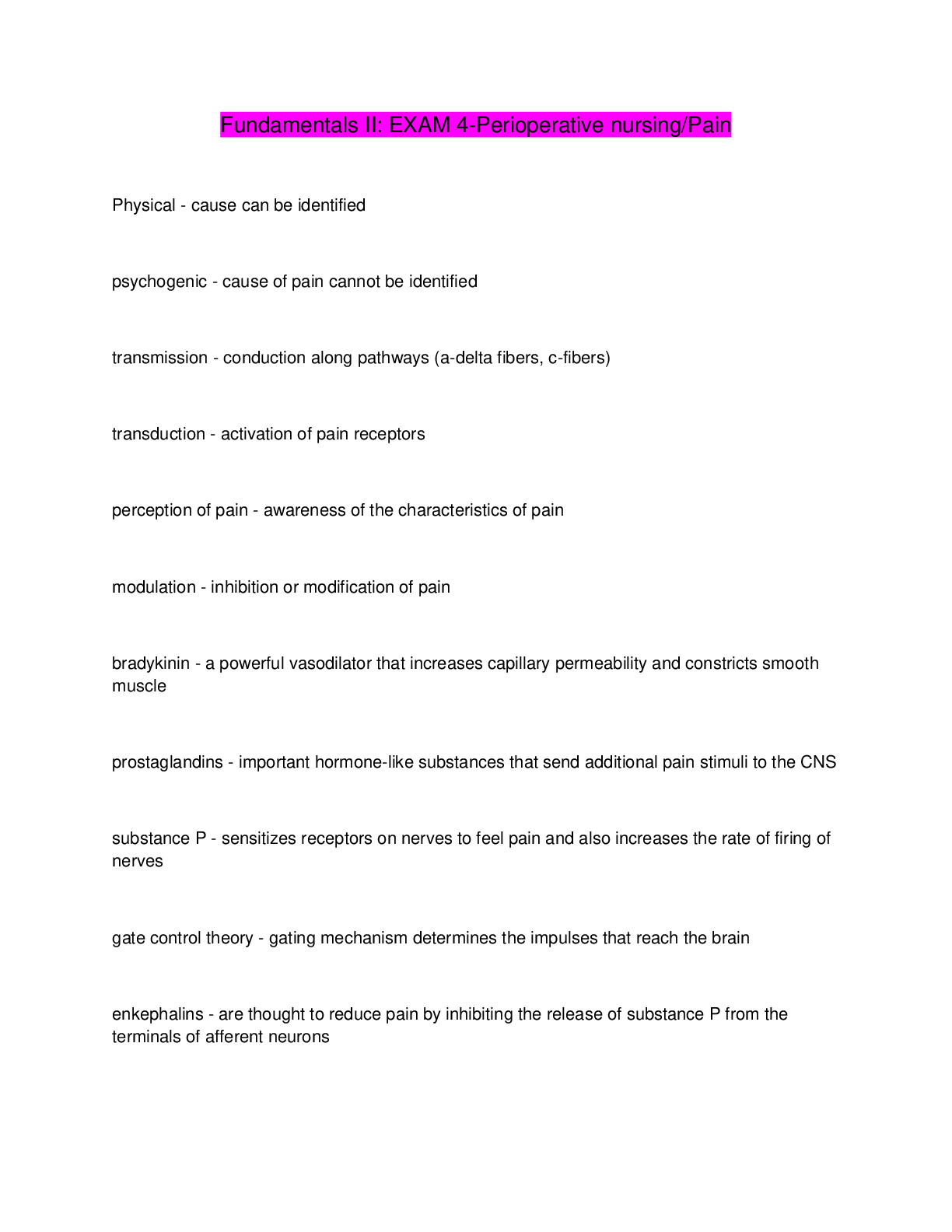





 (1).png)



